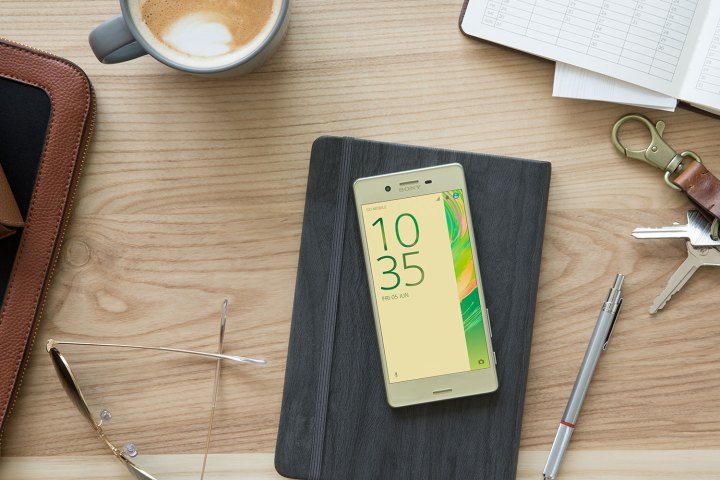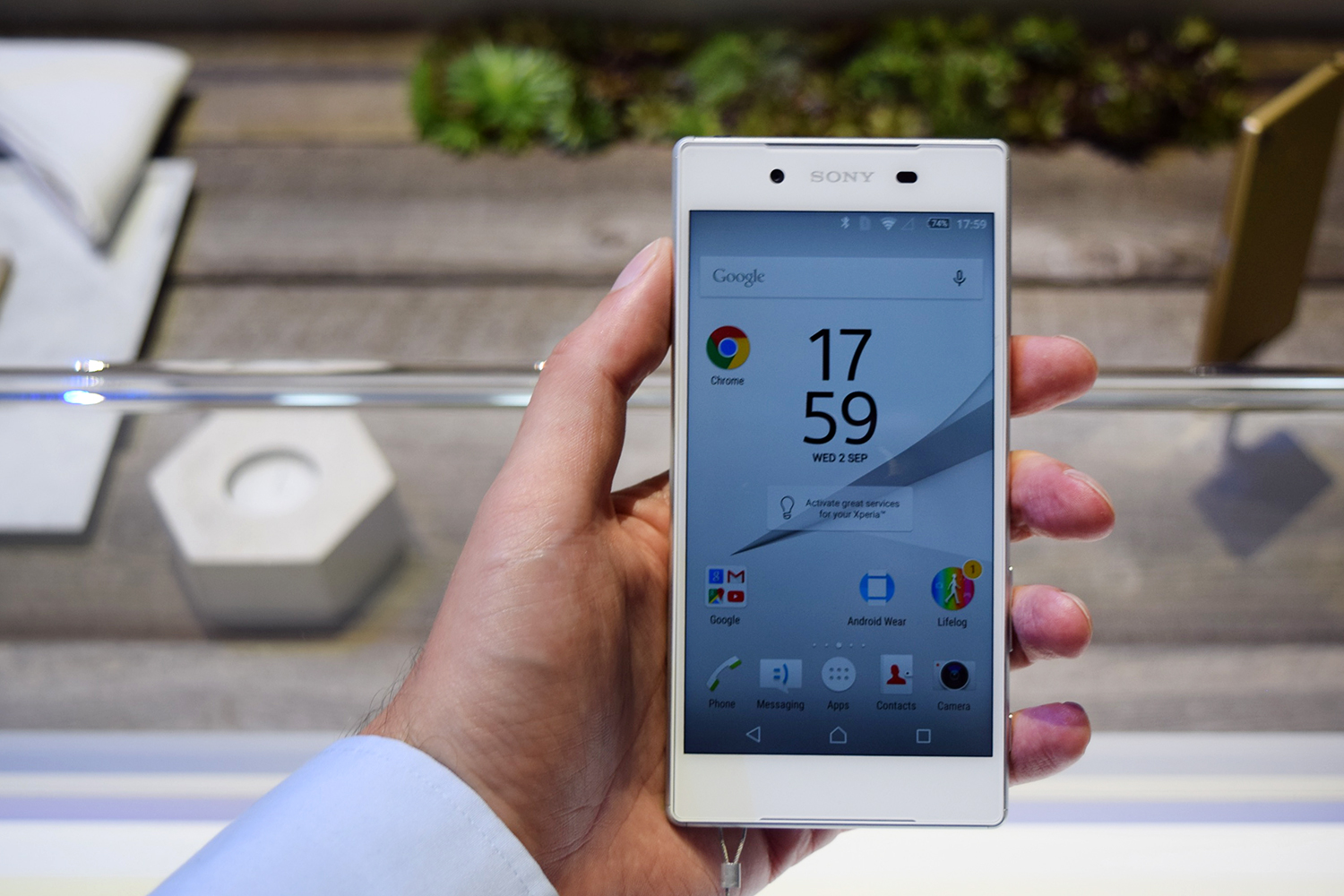
But, what the hell? Why has Sony failed to make any noticeable impact in the second largest smartphone market in the world? As a worldwide consumer electronics company, there’s no lack of brand recognition. What’s the problem here?
“Sony’s mobile strategy in the United States has been a mystery to us for years,” John Oxley of the popular fan site, Xperia Blog, told Digital Trends. “From the outside looking in, we’ve always struggled to understand why Sony has failed to strike strong partnerships with the big U.S. carriers.”
A month ago, we were again impressed with Sony’s three new Xperia X phones when they debuted at MWC in Barcelona, and the company was quick to make it clear that all three phones will be coming to the United States, but we haven’t heard a peep since. How can we seriously believe Sony Mobile cares about the U.S. anymore?
Sony’s history of phone failures in the U.S.
Failing to launch phones isn’t new to Sony. Before the iPhone and Android boom, Sony still struggled, but its Sony Ericsson phones often at least found a consistent home on AT&T (called Cingular, at the time). They were powerful, often innovative, and often available on one carrier.
Fast forward past the iPhone and the failure of the Xperia Play. In 2013, Sony launched its renewed push for a slice of the smartphone pie with the Xperia Z line. Although Sony had some catching up to do, it surprised many with a six-monthly flagship release schedule, while everyone else was beginning to update annually. The strategy failed. Most of these phones never made it across the Atlantic, and even the ones that did received limited releases in the States.
T-Mobile sold the Xperia Z in 2013, and then the Z1S and Z3 in 2014. Verizon sold the Z2 Tablet and Z3V in 2014, but that’s it for American carrier support since 2013. In 2015, Sony didn’t sell a single new smartphone through U.S. carriers. Instead, it tried to sell its phones and tablets directly to customers unlocked. It’s an odd strategy to say the least, since U.S. buyers typically buy their phones from carriers – not unlocked over the Internet.
Sony’s failure to get any phones released in 2015 is confusing. It arguably stole the show at IFA in Berlin in September 2015 with the Xperia Z5 trio. The Z5 Compact was the best small smartphone we’d seen (until the new iPhone SE), and a nice change from the usual huge phablet phones we see these days. The basic Z5 is a solid flagship with a lightning fast camera, and the Z5 Premium sports the first 4K screen ever seen on a
Sony has repeatedly turned up a day late and a dollar short in America.
To make matters worse, the announcement of the Z5 lineup caused the cancellation of the Verizon-bound Xperia Z4V. Although Sony has belatedly brought versions of the Xperia Z5 and the Z5 Compact to the States, the devices don’t have a carrier supporting them and – worst of all – Sony has removed the fingerprint sensor from the U.S. versions.
“We are genuinely perplexed why Sony was not able to work with a U.S. carrier to bring the Xperia Z5 series to U.S. customers,” said Oxley. “We must have received over a hundred emails asking if Sony planned to officially bring the Xperia Z5 series to the U.S. and many more queries over social media.”
Oxley and his colleagues even created a special USA buyers guide on the Xperia Blog telling Americans which models would work with U.S. carriers and where to buy them.
The whole Z5 range landed in other markets in October and November last year, but Sony only made the Z5 and Z5 Compact (sans fingerprint sensor) available in the U.S. from February 7, sold unlocked through retailers like Amazon and Best Buy.
“The decision to keep both devices unlocked in this market was what we believe was appropriate for the business at this time,” explained a Sony spokesperson in an email to Digital Trends. “We are still focusing on our current relationships with selected partners in the U.S. as well as further exploring the unlocked market.”
Clashing with the carriers
Perhaps Sony has just never jumped through enough hoops for wireless carriers in the U.S. If you cast your mind back to the beginning of Samsung’s Galaxy S line, you’ll remember that it created a different variant for every carrier. It was only when sales really took off that Samsung could get away with Apple’s single iPhone model strategy.
Verizon obviously wanted to put its own mark on the Z4, reportedly with wireless charging and a higher resolution display, but that takes time and it understandably lost interest when Sony failed to deliver before the newer and better Z5 was announced.
There could also be other reasons why Sony is focusing on unlocked sales rather than carrier relations.
“We’re seeing a growing trend in consumer demand in this space as carriers move away from two-year contracts and more consumers discover the wide-range of benefits and opportunities to owning unlocked mobile phones, including potential cost-savings benefits, carrier flexibility and more customizable options,” explained Sony’s spokesperson.
This idea that Sony is committed to the increasingly important unlocked market would be a lot more convincing if it didn’t drag its heels so much. Why has there been such a big gap between the global models and the U.S. versions if they’re going to be sold unlocked? Six, or even three, months is a long time in mobile tech.
“In theory, it should be much easier and quicker. Sony doesn’t help itself with the delay,” said Oxley. “The news that Sony was shutting down its direct Sony website only caused more groans, making it that much harder for committed Sony fans to get hold of Xperia devices with a U.S. warranty. On top of that, they rub salt in the wound by taking out key features such as the fingerprint sensor.”
New Xperia X line is destined for obscurity
We don’t have concrete dates yet, but the company has committed to a summer U.S. release for the new Xperia X phones. This appears to be a step in the right direction, in the sense that Sony may be releasing the new phones worldwide at the same time, or close to it. But it’s more like a case of one step forward, two steps back.
In 2015, Sony didn’t sell a single new smartphone through U.S. carriers.
The Xperia X phones will only be sold unlocked through retailers like Amazon and Best Buy. The lack of carrier support will immediately rule them out for many interested parties who are unwilling, or unable, to pay upfront in full for a new phone. They’re also going to be up against a lot of stiff competition in the unlocked smartphone market where many rivals are quite simply offering more for less.
The American Z5 costs $600, but you can buy the standard version with fingerprint sensor unlocked for $620 on the U.K. Amazon site right now. The U.S. version doesn’t look like a great deal for Americans, especially when you compare the price to other flagship phones like the Galaxy S6, LG V10, Nexus 6P, and Moto X Style – all of which you can buy for the same price or less. The Xperia X line is going to run into exactly the same problem.
Why cut the fingerprint sensor?
If you get past the availability issues, there’s also a bit problem with Sony’s recent U.S. phones. They’re hobbled. Sony eliminated the fingerprint sensor, a feature that all its competitors have.
“The key difference between the global variant and the U.S. variant is that the U.S. variants of the Xperia Z5 and Xperia Z5 Compact U.S. will not have fingerprint sensor technology,” explained a Sony spokesperson. “This was simply a business decision.”
We’ve learned that Sony is planning to disable the fingerprint sensor in the U.S. versions of the Xperia X and X Performance as well (the budget XA doesn’t have the fingerprint sensor). Yet again, Sony is citing unspecified “business reasons.”
It is very hard to fathom. Why would Sony remove something like the fingerprint sensor, which is fast-becoming an expectation for flagship smartphones? It’s in the two biggest-selling phone lines: the iPhone and Galaxy S series, and it’s becoming harder and harder to find a flagship smartphone without one. Does Sony really believe that Americans aren’t interested in it?
The idea that this “business decision” is about keeping costs down is thrown into doubt by the revelation that the fingerprint sensor will be disabled in the software, not missing in the hardware. Why would Sony disable a hardware feature that’s available in other countries?
You may as well pretend Sony doesn’t exist in the U.S
Speaking at a strategy meeting in Tokyo in the summer of 2013 Sony CEO, Kazuo Hirai, explained that the company’s bid to climb the smartphone charts would focus on Japan and Europe. “Those two are the most important areas for us and we’ll put substantial resources there. But not yet for the U.S. and China,” explained Hirai. “It’s not realistic to try to do everything at once. In the U.S. we’ll start gradually.”
Three years down the line, it feels like Sony still hasn’t begun. Sony Mobile posted a loss of more than $1.5 billion after a major write down in 2014, and it has been forced to scale back the business further since then, though the mobile division is still losing money. With global smartphone sales growth slowing, the cost of the push it would need to make in the States to muscle in on Apple and Samsung is unlikely to be outweighed by the money it’s leaving on the table.
If Sony really plans to make a play for direct sales (the unlocked market) then it needs to rethink its pricing strategy. If it wants to carve out a sizeable U.S. market share, then it needs to partner with carriers. If it expects Americans to buy its smartphones, then it should stop cutting standard features without any explanation.
What’s really sad about all this is that the Xperia Z and X series are attractive, well-made smartphones that deserve to find an audience. Sony’s hardware is fantastic, but its strategy is killing its prospects in the United States.
Editors' Recommendations
- I just got one of 2024’s most interesting phones. Here are 5 things I can’t wait to try
- The Galaxy S23 upgrade I’m most excited about is one you can’t see
- The Nothing Phone is finally coming to the U.S., and I can’t wait
- Galaxy S22 and Watch 4 get stunning new special editions that you can’t buy
- Lenovo’s cool new gaming phone leaked, but you can’t buy it




